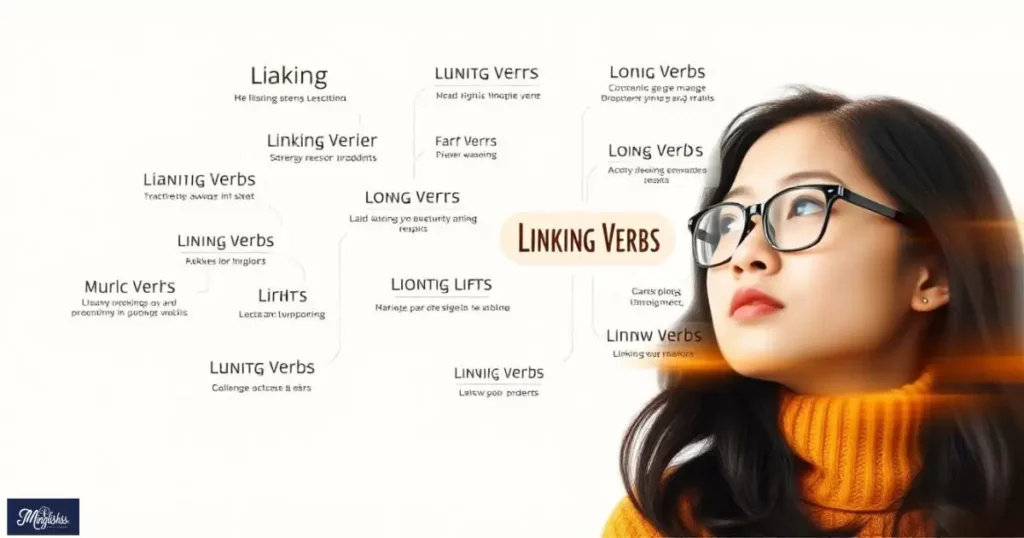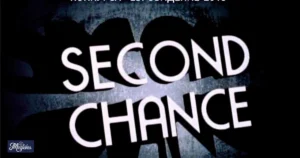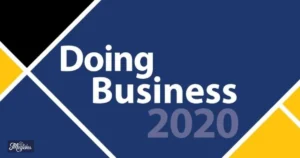Verbs are the heartbeat of any sentence. They breathe life into language, allowing us to describe actions, states, and occurrences. Understanding the different types of verbs is essential for mastering English grammar.
Grasping the basic types of verbs empowers you to communicate more effectively. Whether you’re writing an essay, giving a speech, or having a casual conversation, knowing how to use verbs properly will enhance your clarity and expression.
In this blog post, we will explore the various types of verbs, their functions, and how to use them in sentences. We’ll also look at different tenses, such as the present perfect continuous, and provide examples to illustrate each concept.
This guide will be a valuable resource for anyone looking to improve their English language skills.
Action Verbs
Action verbs express physical or mental actions. They tell us what the subject of a sentence does.
Definition
Action verbs are words that describe what someone or something does. These actions can be physical (like “run”) or mental (like “think”).
Key Hardware Abbreviations
Examples of Action Verbs
- She runs every morning.
- They cooked dinner together.
- He reads books daily.
- I painted the fence.
- The dog barks loudly.
Note
Action verbs can be used in any tense. They are versatile and form the core of many sentences. For example, in the sentence “She runs every morning,” the verb “runs” tells us the action being performed.
Stative Verbs
Stative verbs describe a state or condition. They are not about actions but about being or existing.
Definition
Stative verbs are used to express a condition or state of being. Unlike action verbs, they do not show physical actions.
Examples of Stative Verbs
- She loves chocolate.
- He knows the answer.
- They own a house.
- I believe in you.
- The cake smells delicious.
Note
Stative verbs often relate to emotions, relationships, thoughts, or senses. For example, in the sentence “She loves chocolate,” the verb “loves” describes a feeling or state rather than an action.
Linking Verbs

Linking verbs connect the subject with more information about the subject.
Definition
Linking verbs serve as a bridge between the subject and the subject’s complement. They do not show action but link the subject to additional information.
Examples of Linking Verbs
- She is a teacher.
- They are excited.
- He seems tired.
- The soup tastes good.
- It became cold.
Note
Linking verbs often involve forms of “to be” (like “is,” “are,” “was”) or words like “seem,” “become,” or “appear.” For example, in “She is a teacher,” the verb “is” connects the subject “she” with the complement “a teacher.”
Modal Verbs
Modal verbs are auxiliary verbs that express necessity, possibility, permission, or ability.
Definition
Modal verbs modify the main verb and convey different shades of meaning, such as ability, permission, or obligation.
Examples of Modal Verbs
- You should study more.
- They can swim.
- She might come.
- He must finish the project.
- We could try again.
Note
Modal verbs are always followed by the base form of the main verb. For example, in “You should study more,” “should” is the modal verb that suggests a recommendation or advice.
Auxiliary Verbs
Auxiliary verbs, also known as helping verbs, are used with a main verb to form tenses, voices, or moods.
Definition
Auxiliary verbs help the main verb to show different aspects of time, voice, or mood. Common auxiliary verbs include “be,” “have,” and “do.”
Examples of Auxiliary Verbs
- She is reading a book.
- They have finished the work.
- He does not like coffee.
- We were walking to school.
- I have been working all day.
Note
Auxiliary verbs are essential for forming complex verb tenses. For example, in “She is reading a book,” “is” helps to form the present continuous tense, showing an ongoing action.
Transitive Verbs
Transitive verbs require a direct object to complete their meaning.
Definition
Transitive verbs are verbs that need a direct object to make sense. The action of the verb is directed toward something or someone.
Examples of Transitive Verbs
- She kicked the ball.
- They watched a movie.
- He wrote a letter.
- We built a house.
- I read the book.
Note
Without a direct object, transitive verbs do not convey complete thoughts. For example, in “She kicked the ball,” “kicked” is the transitive verb, and “the ball” is the direct object receiving the action.
Intransitive Verbs
Intransitive verbs do not require a direct object to complete their meaning.
Definition
Intransitive verbs are verbs that do not need a direct object. The action stops with the subject.
Examples of Intransitive Verbs
- He sleeps peacefully.
- She laughed loudly.
- They arrived on time.
- We danced all night.
- It rained heavily.
Note
Intransitive verbs can stand alone without a direct object. For example, in “He sleeps peacefully,” the verb “sleeps” does not need an object to complete the sentence.
Reflexive Verbs
Reflexive verbs are verbs where the subject and the object are the same.
Definition
Reflexive verbs are used when the subject performs an action on itself. These verbs are often followed by reflexive pronouns like “myself,” “yourself,” etc.
Examples of Reflexive Verbs
- She taught herself to play the piano.
- He blames himself for the mistake.
- They enjoyed themselves at the party.
- I cut myself while cooking.
- We reminded ourselves of the rules.
Note
Reflexive verbs emphasize that the action is being done by the subject to itself. For example, in “She taught herself to play the piano,” “herself” is the reflexive pronoun showing that she did the action to herself.
Tenses of Verbs
Present Simple
The present simple tense describes habits, general truths, and repeated actions.
- Examples:
- She walks to school every day.
- I read books often.
- They live in New York.
- He likes coffee.
- We play soccer on weekends.
Present Continuous
The present continuous tense describes ongoing actions happening now.
- Examples:
- She is studying for exams.
- They are playing outside.
- I am cooking dinner.
- He is reading a book.
- We are watching a movie.
Present Perfect
The present perfect tense connects the past with the present, describing actions that have happened at an unspecified time or that started in the past and continue now.
- Examples:
- She has visited Paris twice.
- They have finished their homework.
- I have known him for years.
- He has seen the movie.
- We have lived here since 2010.
Present Perfect Continuous
The present perfect continuous Basic Types of Verbs tense describes actions that started in the past and are still continuing or have recently stopped.
- Examples:
- She has been working all day.
- They have been playing for hours.
- I have been studying English.
- He has been reading that book.
- We have been waiting here for an hour.
Past Simple
The past simple tense describes actions that happened and were completed in the past.
- Examples:
- She visited her grandma last week.
- They watched a movie yesterday.
- I finished my work.
- He played soccer on Saturday.
- We traveled to Spain last summer.
Past Continuous

The past continuous tense describes actions that were happening at a specific time in the past.
- Examples:
- She was reading when I called.
- They were playing soccer.
- I was cooking dinner.
- He was sleeping at noon.
- We were watching TV.
Future Simple
The future simple tense describes actions that will happen in the future.
- Examples:
- She will travel next month.
- They will play soccer.
- I will read the book.
- He will finish his homework.
- We will visit our friends.
Future Continuous
The future continuous tense describes actions that will be happening at a specific time in the future.
- Examples:
- She will be studying at 8 PM.
- They will be playing soccer.
- I will be cooking dinner.
- He will be sleeping.
- We will be traveling.
Future Perfect
The future perfect tense describes actions that will be completed before a specific time in the future.
- Examples:
- She will have finished by 5 PM.
- They will have played the game.
- I will have completed my work.
- He will have read the book.
- We will have traveled to Paris.
Future Perfect Continuous
The future perfect continuous tense describes actions that will have been happening up until a specific time in the future.
- Examples:
- She will have been studying for two hours by then.
- They will have been playing for hours.
- I will have been working on the project.
- He will have been reading for an hour.
- We will have been traveling for a day.
Answer To Key Question
1. What is the difference between transitive and intransitive verbs?
Transitive verbs require a direct object to complete their meaning, while intransitive verbs do not. For example, “She reads a book” uses a transitive verb, while “She reads” uses an intransitive verb.
2. How do modal verbs differ from auxiliary verbs?
Modal verbs express necessity, possibility, or permission and modify the main verb. Auxiliary verbs help form different tenses, voices, or moods.
3. Can a verb be both transitive and intransitive?
Yes, some verbs can be both transitive and intransitive, depending on how they are used in a sentence. For example, “She sings” (intransitive) and “She sings a song” (transitive).
4. Why is the present perfect continuous tense used?
The present perfect continuous tense describes actions that started in the past and are still continuing or have recently stopped. It connects the past with the present.
5. How do linking verbs differ from action verbs?
Linking verbs connect the subject to more information about the subject, while action verbs show physical or mental actions.
Conclusion
Understanding the basic types of verbs is crucial for mastering English grammar. Verbs are versatile and form the foundation of sentences, allowing us to express actions, states, and conditions.
Whether you’re using action verbs, linking verbs, or exploring different tenses, knowing how to apply these concepts will enhance your communication skills.
By learning the different types of verbs and their functions, you can improve your writing and speaking and convey your thoughts with clarity and precision.
Hi, I’m Robert James, the Admin of the “Minglishs” website. I oversee daily operations, ensuring everything runs smoothly and efficiently for an optimal user experience.










